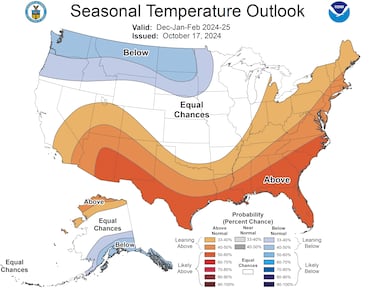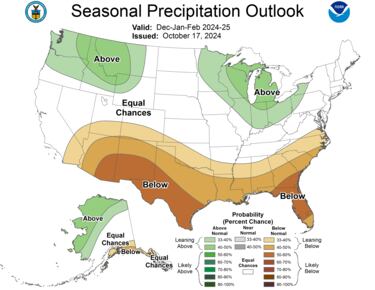Snowfall season arrives in US: These are the most affected cities in the country according to experts
These cities could see more snow this year, according to the National Weather Service.


As the colder winter months and the festive holiday season draw near, many might be wondering how the shifting weather patterns might influence their travel plans and, on a household level, impact their energy bills in the months ahead. While these forecasts are subject to change as climatic conditions evolve, the National Weather Service (NWS) provides three-month outlooks that offer valuable insights. These forecasts indicate which regions of the country are likely to experience temperatures above or below the seasonal average, as well as areas that may receive increased or decreased precipitation levels. By keeping an eye on these predictions, people can better prepare for the challenges and joys that the winter season brings.
Which areas will likely see cooler temperatures in December, January, and February?
According to the NWS forecast, there is a 40—to 50% chance that a few states across the border with Canada, including Washington, northern Idaho, northern Montana, and North Dakota, will see cooler temperatures. Additionally, states and areas south of those states, including Oregon, Idaho, southern Montana, and South Dakota, have a 33—to 40% chance of seeing cooler-than-average temperatures. As you can see, parts of southern Alaska are also likely to see lower temperatures than are typically recorded.

Areas that could see more snow this winter
When it comes to snowfall, the BLS only provides a perciptation report, which includes rain too. However, in states where snow is normal in the winter, one can assume that in addition to more rain, more snow could also been seen in the coming months.
Related stories
In the northwest, parts of Idaho, Montana, Montana, Washington, and Wyoming have a 33 to 50 percent chance of seeing above average perciption in the coming months. In the midwest, portions of Illinois, Indiana, Michigan, Minnesota, New York, Ohio, and Pennsylvania, may also see above average snow or rainfall. Some of the latest cities that could be impacted include Seatle, Tacoma, Portalnd, Boise, Minneapolis and Saint Paul, Madison, Detriot, Cleveland, Chicago, and many more across these regions.

These forecasts for both temperature and perciptiation were reiterated in October by the National Oceanic and Atmospheric Adminstration (NOAA) where they reported that “wetter-than-average conditions” could be seen across “the entire northern tier of the continental U.S., particularly in the Pacific Northwest and the Great Lakes region, along with northern and western Alaska.”
Complete your personal details to comment